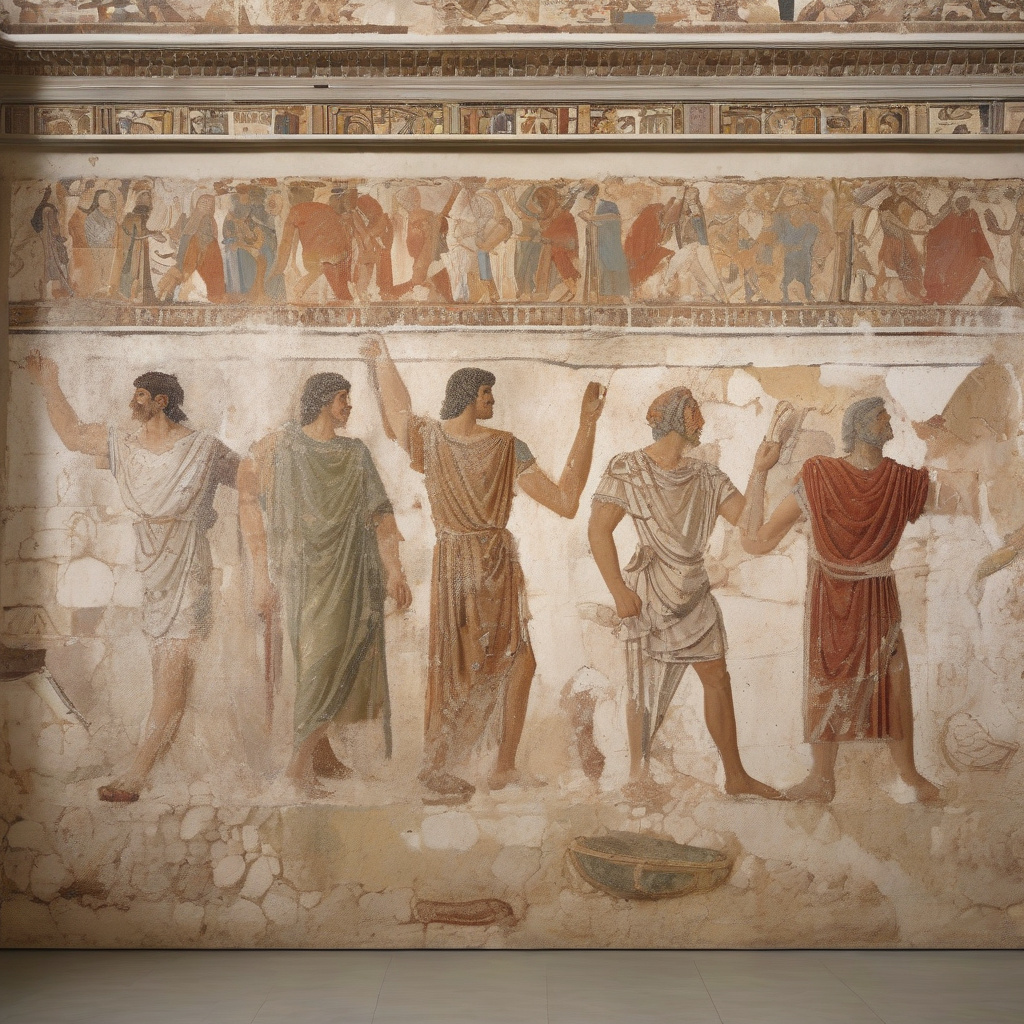In the former Beverly Hills of Roman London, archaeologists were astonished to find thousands of fragments of a 2,000-year-old Roman wall adorned with stunning frescoes. This remarkable discovery sheds new light on the lavish lifestyle and sophisticated artistic tastes of the ancient Romans who once inhabited the area.
The discovery took place during excavations at a construction site in the heart of London’s financial district. As the archaeologists carefully uncovered the fragments of the wall, they were amazed to see intricate frescoes depicting scenes of daily life, mythical creatures, and elaborate geometric patterns. The vibrant colors and detailed designs of the frescoes have remained remarkably well-preserved over the centuries, offering a rare glimpse into the artistic prowess of Roman painters.
Experts believe that the wall was part of a luxurious Roman villa or townhouse, belonging to a wealthy and cultured resident of Londinium, the Roman name for London. The location of the discovery, known in Roman times as the Beverly Hills of London due to its affluent inhabitants and opulent residences, further supports the theory that the wall belonged to a high-status individual.
The frescoes found on the Roman wall provide valuable insights into the decorative tastes and social customs of Roman Londoners. The scenes depicted on the wall include images of exotic animals, such as peacocks and leopards, as well as intricate floral motifs and mythological figures. These motifs were commonly used in Roman art to convey wealth, status, and cultural sophistication, reflecting the desire of the inhabitants to showcase their refined taste and social standing.
The discovery of the Roman wall covered in frescoes has generated excitement and fascination among archaeologists, historians, and art enthusiasts alike. The find not only enriches our understanding of Roman London’s architectural landscape but also highlights the artistic achievements of the ancient inhabitants who once called the city home.
In addition to the aesthetic value of the frescoes, the discovery of the Roman wall holds significant historical importance. It provides concrete evidence of the presence of affluent Roman residents in London and offers a tangible link to the city’s rich and diverse cultural heritage. By studying and preserving these ancient artifacts, researchers can piece together the puzzle of London’s past and gain a deeper appreciation for the enduring legacy of the Roman Empire.
As the excavation of the Roman wall continues and more fragments are uncovered, there is no doubt that further revelations and discoveries await. Each new find adds another layer to the fascinating history of Roman London and underscores the importance of preserving and celebrating the city’s ancient roots.
In conclusion, the uncovering of a 2,000-year-old Roman wall adorned with stunning frescoes in London’s former Beverly Hills is a testament to the enduring allure and intrigue of the ancient world. Through the intricate designs and vibrant colors of the frescoes, we are transported back in time to a bygone era of wealth, culture, and artistic sophistication, reminding us of the timeless beauty and creativity of our predecessors.
Roman London, Frescoes, Archaeology, Ancient Art, Cultural Heritage








